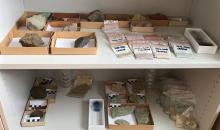Spectral Characterization of planetary surfaces (WP3)
Detection of Carbonates in Martian Weathering Profiles
This study focused on the detection of carbonates in some weathering profiles on Mars. The martian weathering profiles are identified as vertical series of Al-rich clay minerals on top of Fe/Mg-rich clay minerals. The combination of carbonates with these clay minerals in a surface weathering context can provide constraints on the state of the atmosphere at the time of the alteration, in particular about the pressure in CO2. We detailed this work in Bultel et al. (2019, JGR Planets). These observations are very complementary with the experiments we presented in Viennet et al. (2019, Chemical Geology).
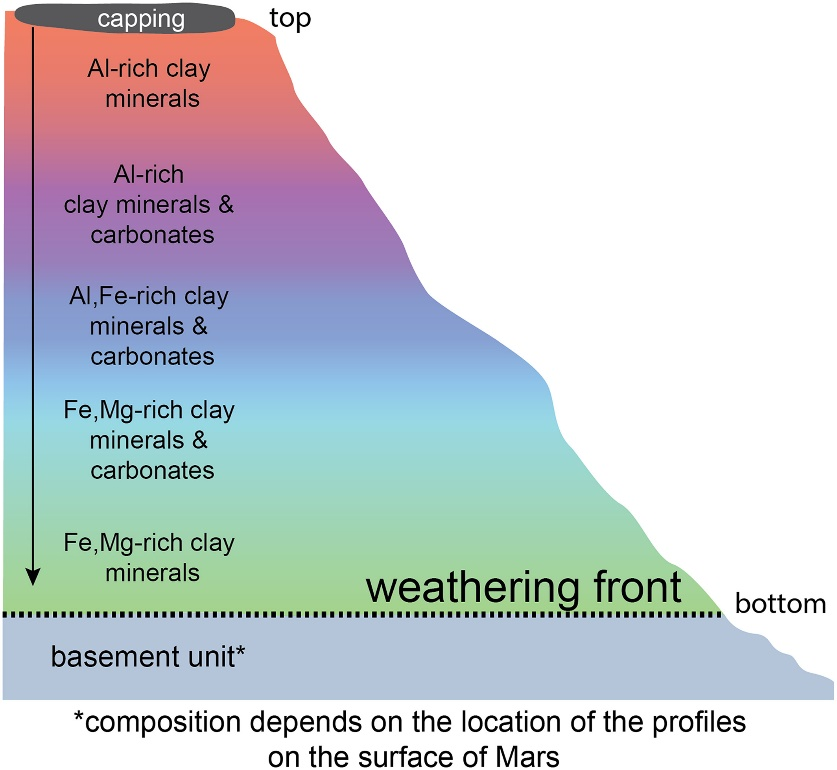
Study of potential landing sites for futures surface missions on Mars
The Mawrth Vallis region has been proposed as a potential landing site for the recent Mars2020 and ExoMars surface mission selections. Large and thick outcrops of this region show strong signatures in clay minerals in the NIR with the orbital hyperspectral imagers OMEGA and CRISM, implying a long water history, and hence high potential for past habitability. In Poulet et al. (2020, Astrobiology), we present the most recent advances in our comprehension of the geological context of the proposed landing sites for both surface missions. As landing ellipses for the two missions have very different sizes and constraints, a different area was selected for each mission in the Mawrth Vallis region. The region was also proposed as a landing site for human exploration: besides its scientific interest with respect to the search for ancient life, the clays at Mawrth Vallis could be a precious water resource.
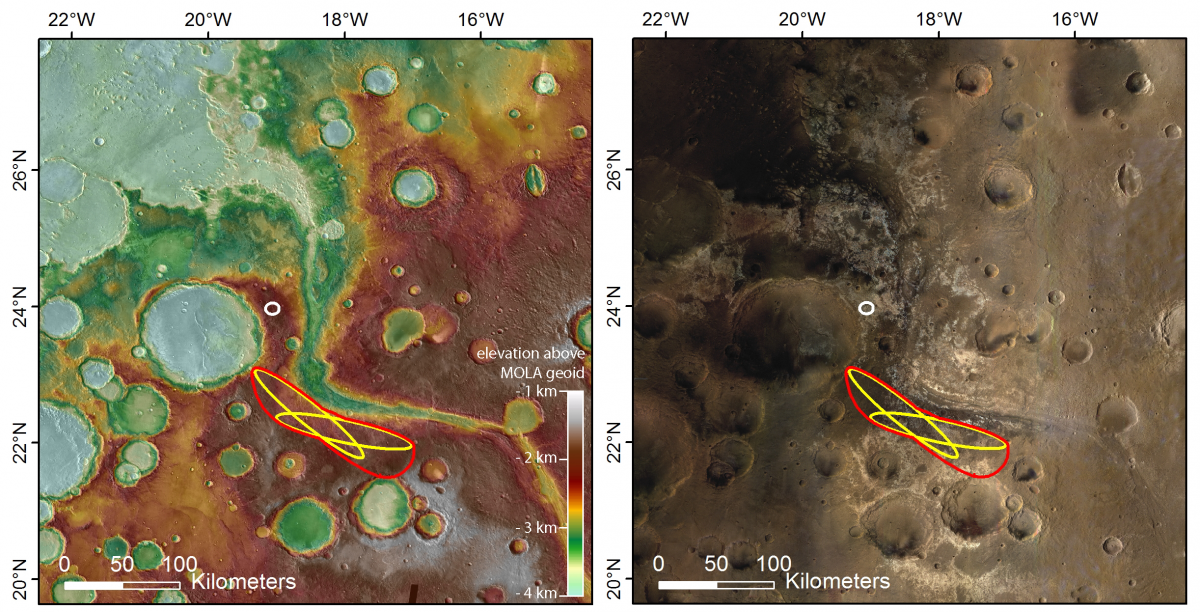
The Mawrth Vallis region, with the proposed landing sites for ExoMars (yellow and red) and Mars2020 (white).
In Lowe et al. (2019, GSA Bulletin), we studied the same Mawrth Vallis region in term of processes of deposition of the thick layered unit that hosts the clay minerals. At least part of the layers seem to have been indeed deposited in water. The presence of fine grain sediments deposited in a quiet aqueous environment is a target for surface exploration as these sediments have a high potential in the preservation of past biosignatures.
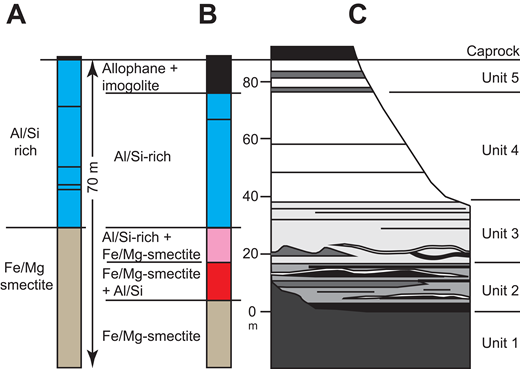
Stratigraphy of the Mawrth Vallis clay-rich units.
Global Mineralogical maps of the surface of Mars
For this project, we used data from OMEGA, the hyperspectral imager onboard Mars Express, that produces spectral cubes similar to MicrOmega, but at the kilometer scale. OMEGA acquired a large number of data cubes covering different parts of the surface over the years since the orbit insertion of Marx Express around Mars in 2004. In Riu et al. (2019, Icarus) we explain how these data cubes were combined to produce a global data cube covering the entire surface of Mars. This dataset allows global mapping of many mineral and ice species. In particular, new global maps of igneous minerals were derived from this global cube and presented in Riu et al. (2019, Icarus).
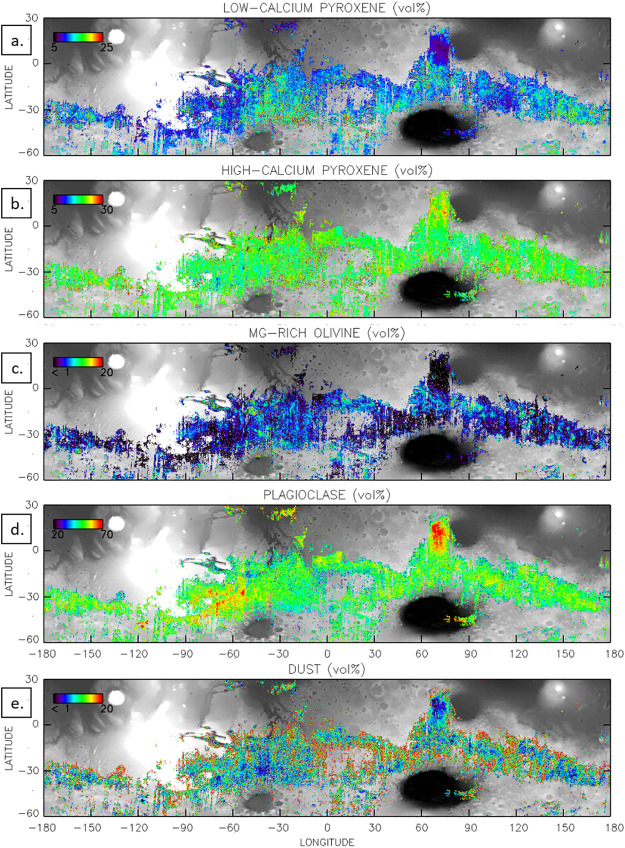
Global maps of some igneous minerals at the surface of Mars derived from the global spectral cube, superimposed on a grey scale topography. Uncolored areas are covered with dust.

